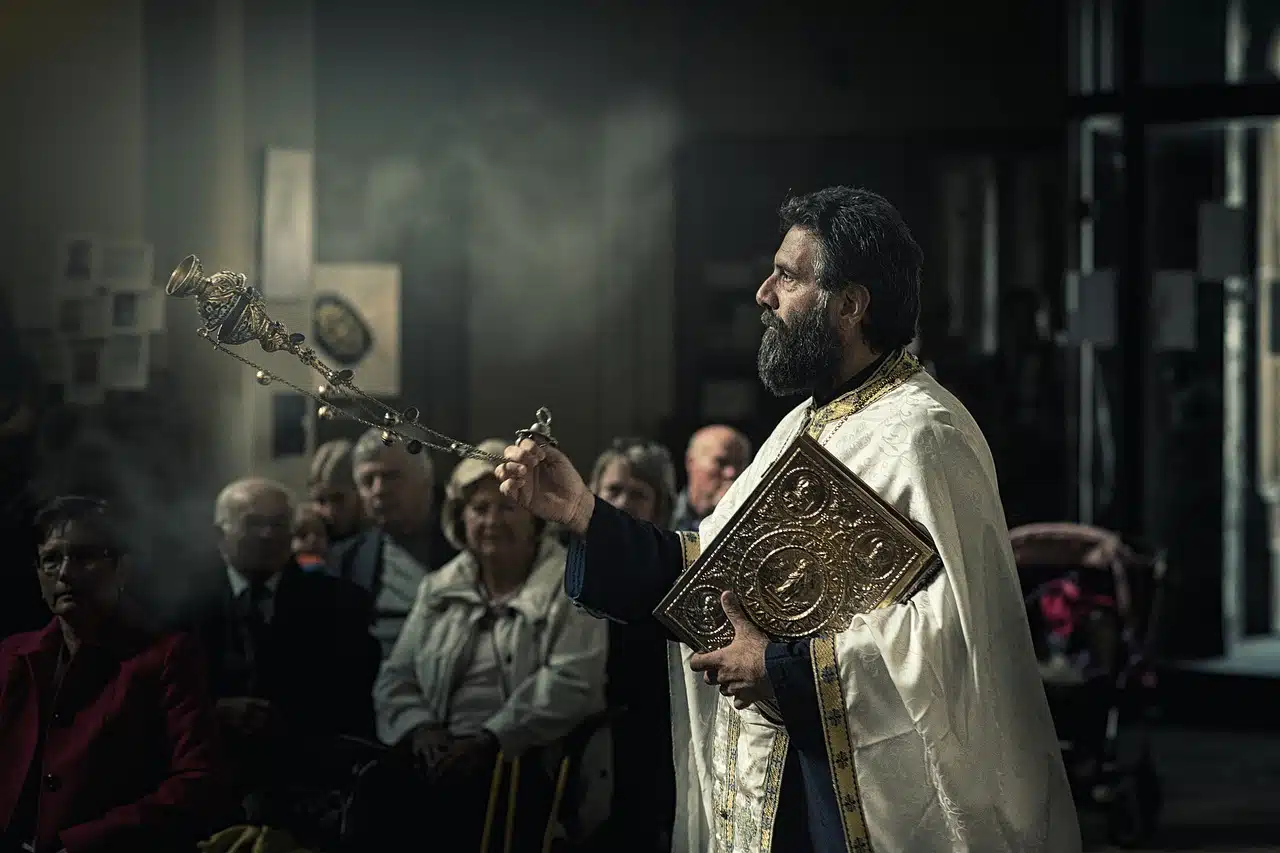
The idea of clergy refers to priests.
Clergy is a term originating from the Latin clerus that can refer to the group of clerics (as those who dedicated their lives to religious activity within the framework of an institution are known). The concept, in this framework, is used to refer to the priests of the Catholic Church .
The characteristics of the clergy depend on each religion . In general, it can be said that he is the one who leads the rituals and is dedicated to teaching doctrine and preaching . Baptism , circumcision and marriage are some of the acts and sacraments carried out by the clergy.
It should be noted that the clergy can act both inside temples and places of worship and outside them. Thus, it is possible that clerics go to preach in schools or hospitals, for example.
In some countries, the clergy is covered by special legislation since clerics enjoy ecclesiastical jurisdiction . It is also common for it to be financed, at least in part, by the state . The most common thing, however, is that the faithful themselves finance it through their donations.
The clergy in Christianity
Christianity divides the clergy into the regular (linked to the religious vows of poverty, obedience and chastity) and the secular (clerics who do not take these vows).
The hierarchical organization of the regular Christian clergy has the pope at the top, followed by archbishops , bishops and priests . Everyone must comply with and respect certain rules, such as ecclesiastical celibacy (that is, the impossibility of having sexual relations). It should be noted that women cannot be ordained in this clergy.
It should be noted that many religions are divided hierarchically and in most of them the term clergy appears as one of the pillars of their organization .

The idea of clergy refers to the group of clerics.
The case of the Orthodox Church and the Catholic religion
Surely two of the religions that share the most things in common are the Russian Orthodox Church and the Catholic Church ; between them, however there are also differences that have separated them throughout history. In both, the conditions that people must meet to be part of the clergy are different.
In the Russian Orthodox Church the clergy presents clear differences from that of the Roman Catholic Apostolic Church; But without a doubt the most striking characteristic is that, although men are also the only ones who can be ordained priests, there is no problem with them having a family and love life .
This means that there are deacons and priests in this Church who freely choose celibacy or who dedicate their lives to serving God but also have a family . The only requirement in this sense that those who wish to be ordained must meet is that they have not been married more than once . In turn, those who have chosen celibacy must make their vows and resolve to remain celibate once they have been ordained.
Relations between both institutions have always been delicate due to ideological differences and the way each one approaches faith and biblical teachings. The clear difference between both institutions is that the Orthodox Church rejects the absolute jurisdiction of the Catholic Pope over all Christians. There are differences to such an extent that for decades the Catholic Pope has not visited Russia nor the Russian Patriarch Rome .
The great division between both religions, of common origin, was the founding of New Rome in Constantinople , during the mandate of Emperor Constantine in 330 AD . From there the norms in both institutions would gradually change and therefore, the composition of the clergy of each would also change.
In the case of the Orthodox religion, it was determined that the bishop of a city should have absolute power, and should not even respond rigorously to the orders of the Patriarchate , if these did not coincide with the will of said bishop. In the case of the Catholic Church, bishops and priests respond to the will of the pope; and the latter to that of the previous ones: in this way a triangular hierarchy is established.
